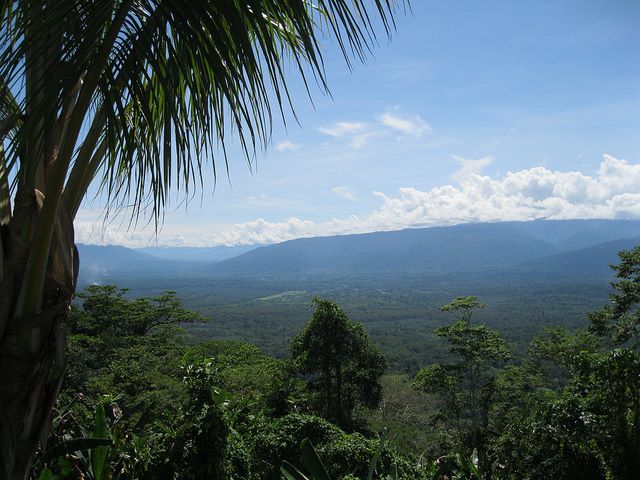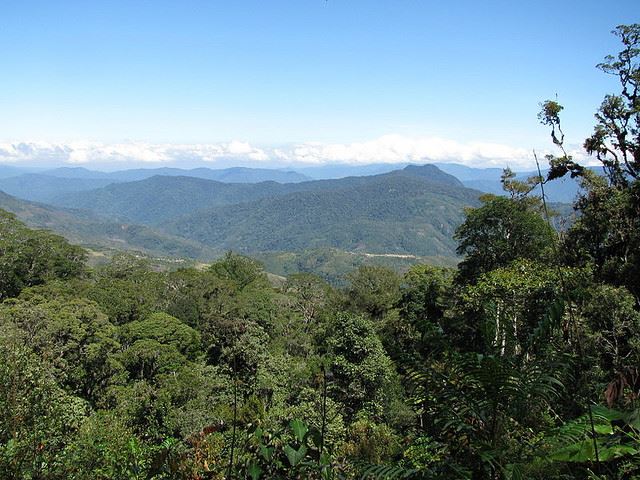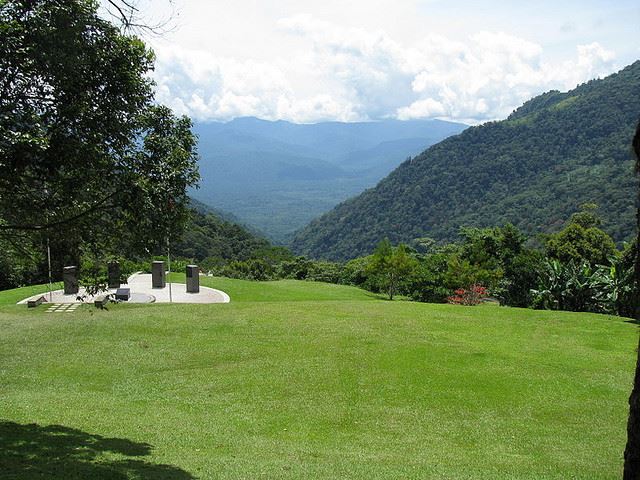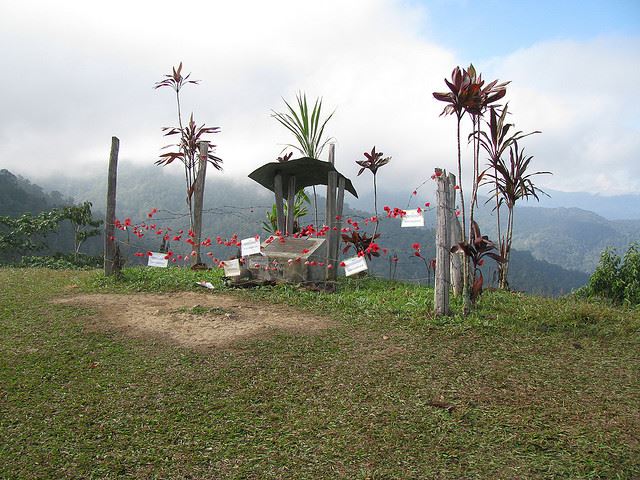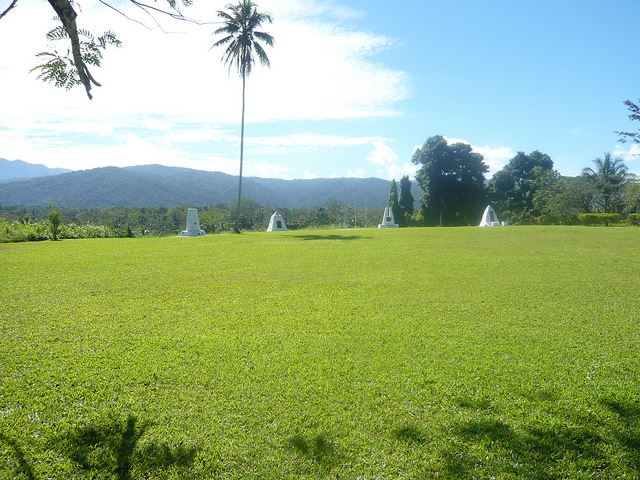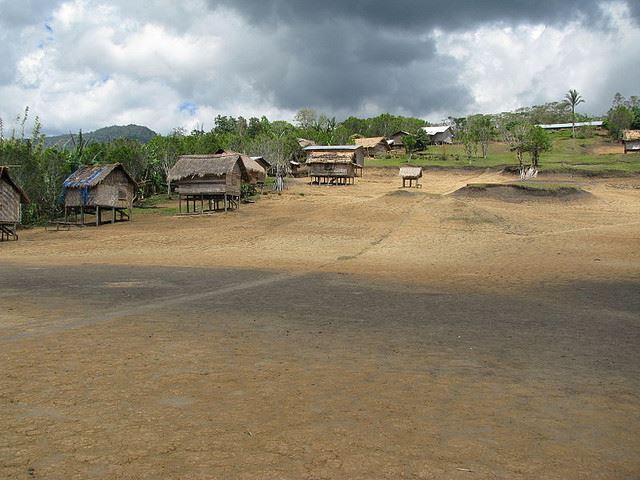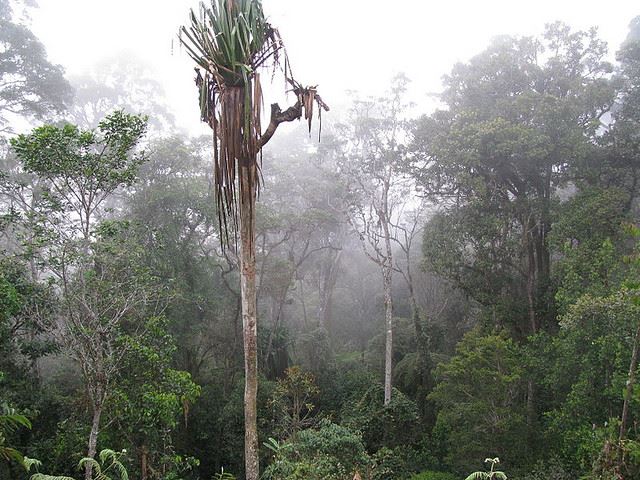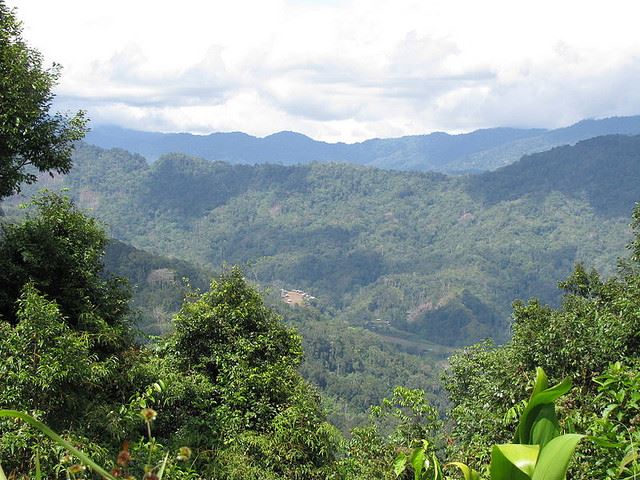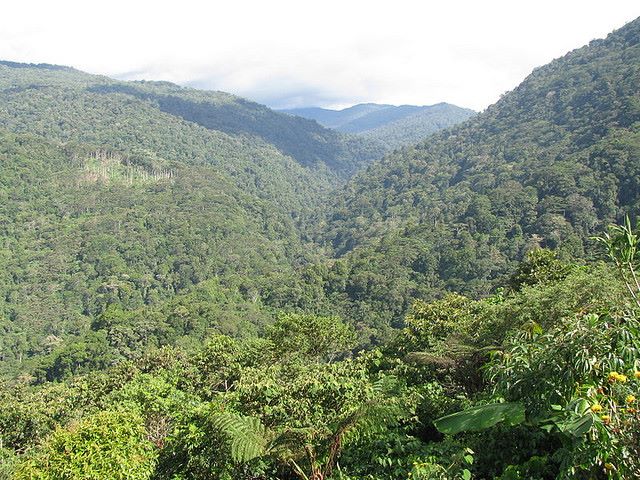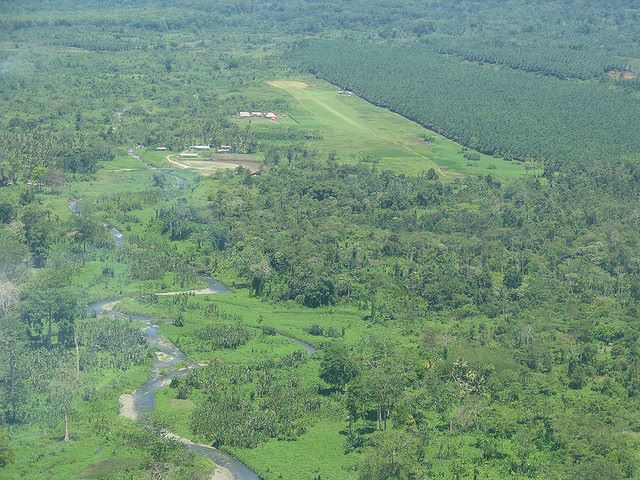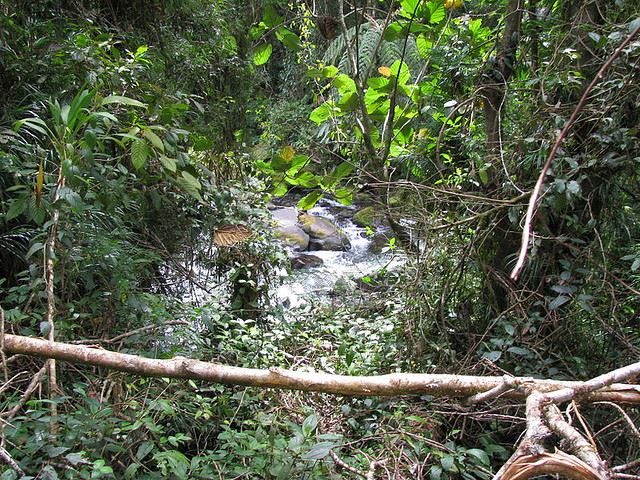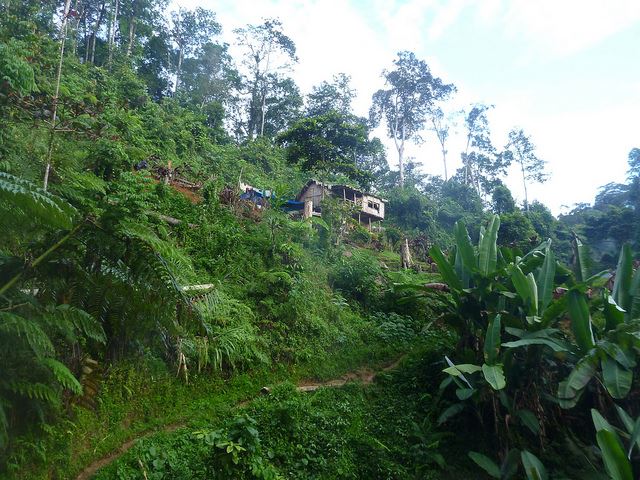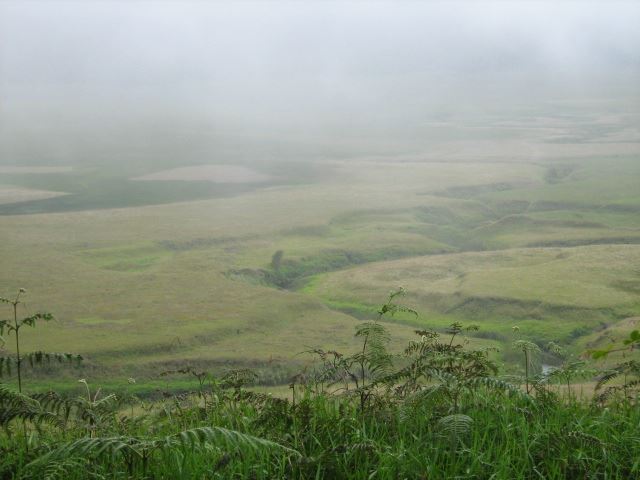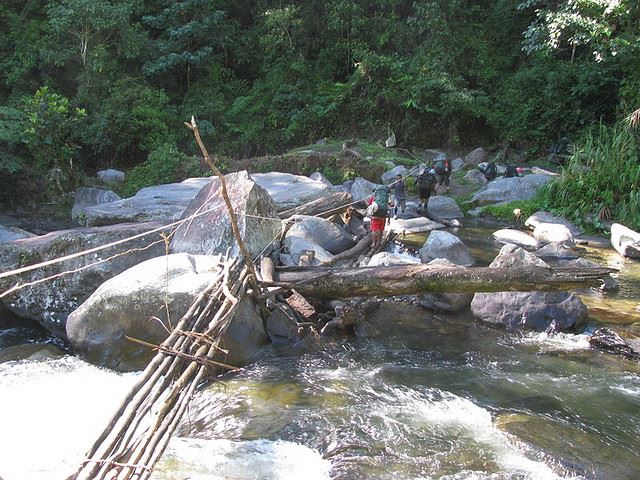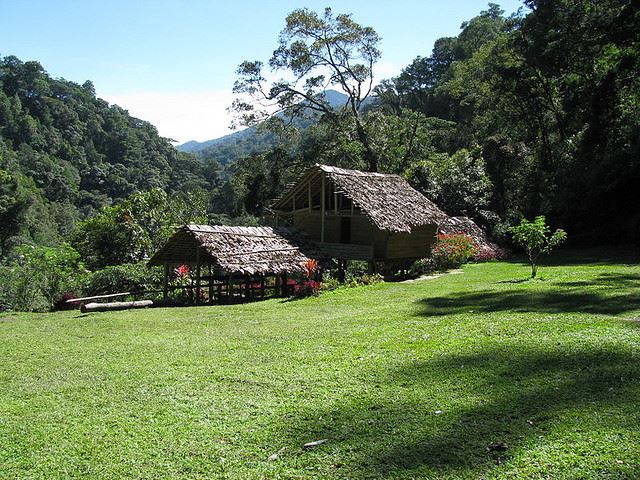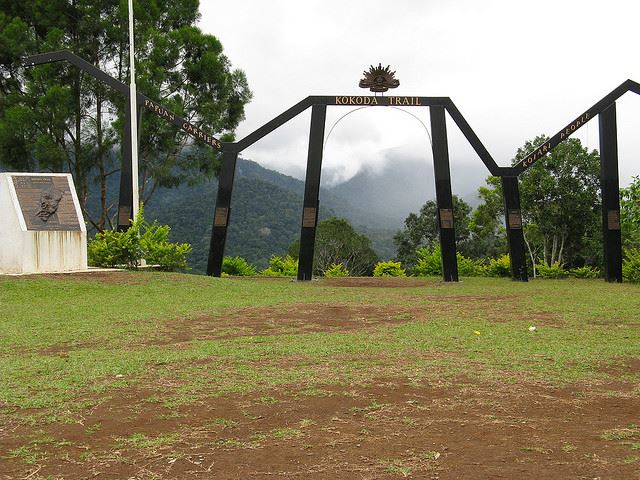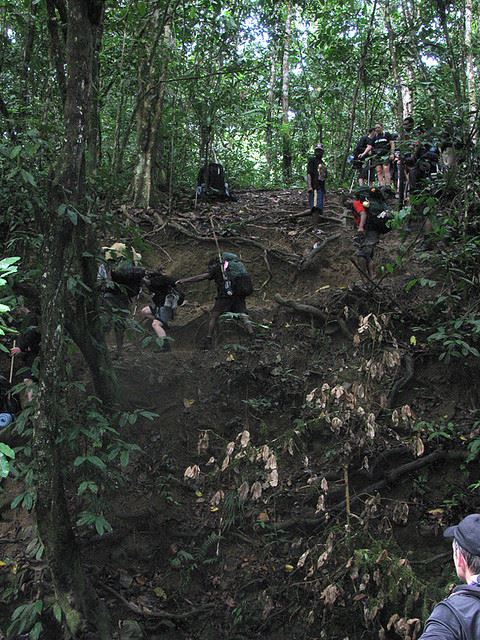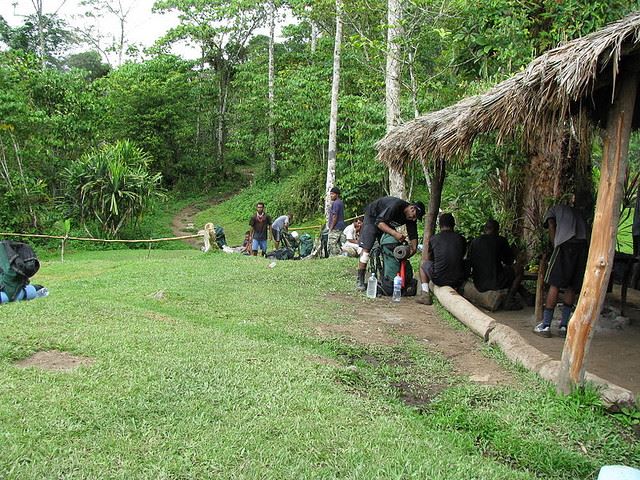Kokoda Trail
Key information: Kokoda Trail 
- Trek 96km through the mountains of Papua New Guinea, along the track bitterly fought over in the WW2 Kokoda Trail Campaign.
- Pass through thick rainforest, cross deep valleys with beautiful clean streams and experience intense, full-on jungle, clambering up steep slopes and wading through mud.
- Witness traditional ways of life, staying overnight in remote villages.
- This is a very challenging walk through difficult terrain. Most walkers train for a minimum of six months before attempting the trail, and the average walking speed is around 2km per hour. Come prepared.
BEWARE: There is some instability in Papua New Guinea, and very high crime levels. Violent robberies, car-jacking, rape and other assaults are a problem across the country, and there have been cases of attacks and robberies at either end of the Kokoda Trail. On 10th September 2013 a trekking party was attacked, and some members killed, on the Black Cat Track in Morobe Province. All forms of transport can be dangerous; do not take local buses. For more information have a look at the UK Foreign Office website: Papua New Guinea Travel Advice.
Walkopedia rating
- Walkopedia rating85
- Beauty28
- Natural interest16
- Human interest16
- Charisma28
- Negative points3
- Total rating85
- Note: Negs: likely bad weather and tough conditions, heavy loads to carry.
Vital Statistics
- Length: 96km
- Maximum Altitude: 2,190m (Mt Bellamy)
- Level of Difficulty: Difficult
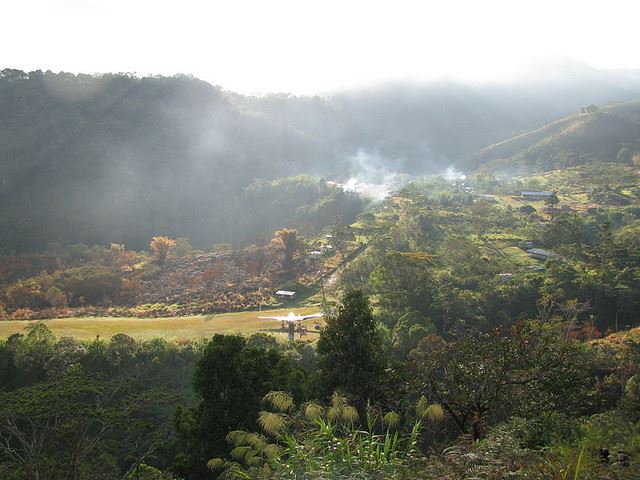
WALK SUMMARY
Running for 96km through the drenched, rugged landscape of the Papua New Guinea rainforest, the Kokoda Trail is the only route through the Owen Stanley mountain range. Known originally as the "Overland Mail Route", or the "Buna Road", and used in the 1890s for access to the Yodda Kokoda goldfields, it is now best known as the site of some particularly unpleasant Second World War battles between Australian and Japanese troops.
The Kokoda Trail has become in recent years something of an Australian pilgrimage. If Gallipoli was the first military test for the young Australian Commonwealth, then the Japanese threat in the Second World War (and the Kokoda Trail Campaign in particular) was the first time that it faced (or, at least, believed it faced) a direct threat to national security. From Port Moresby, on New Guinea's southern flank, the Japanese would have had a base from which to reach the extensive Queensland coastline, and there was a genuine belief in Australia that this was their ultimate aim.
The broader significance of the campaign is now hotly debated: historians have recently argued that there was never any real intention of an invasion of Australia, and even Japan's attempts to cut off supply lines and isolate Australia from her allies were abandoned as early as June 1942. However, in trying to capture the experience of the Kokoda campaign's desperate warfare, it is perhaps enough to know that for Australian soldiers this was truly a fight for their country.
On the 21st July Japanese forces landed at the port of Gona, in what was then Japanese-occupied New Guinea, and began their advance towards Port Moresby. An initial clash at Awala, as early as the 23rd July, forced the Papuan Infantry and 39th Battalions back to Kokoda village, and fighting overnight on the 28th and 29th forced a further withdrawal.
The following two weeks saw a more concerted Allied effort: heavy casualties were sustained in a failed effort to re-capture Kokoda, and the Australians managed to hold off several Japanese attacks. They were forced back to Isurava, but here were given some breathing space, and the opportunity to build up reinforcements, when the Japanese did not press their advantage as expected. Reinforcements were welcome, but they could not overcome the fundamental supply problem. As today, the Kokoda Trail was accessible only by foot, and supplying an army deep into its tough terrain was something of a logistical nightmare.
By the 26th August, a month after fighting had begun, the Japanese advance recommenced and the Australian command decided to fall back. Meanwhile, the supply situation was beginning to alter: the Australians' organisation had improved and their supply lines shortened; it was now the Japanese facing all the difficulties of a long and fragile supply line through tough, alien territory.
In spite of increasing pressures from the senior command at home, the Australian forces under Brigadier Selwyn Porter were in sight of Port Moresby, at Imita Ridge, before their retreat came to a halt. Within a week, Major General Tomitaro Horii had received orders for a Japanese withdrawal from Kokoda, following a disastrous defeat to the Americans in the Solomon Islands, over 1000km away.
Two Australian Brigades harried the Japanese troops all the way back to the coast, with bitter fighting at numerous defensive spots, including Templeton's Crossing and Eora Creek. However, as they advanced, many of the enemy dead they encountered had clearly expired through starvation and disease rather than in action. There was also evidence of cannibalism, on the bodies of both Japanese and Australians.
On 16th November, a joint Australian-US force attacked the Japanese defences on the coast. After a long, drawn-out and costly battle in the area of Buna-Gona they finally achieved victory in late January. Over the two months, 2,300 allied soldiers were killed, and more than 6,000 Japanese soldiers.
The Kokoda Track Campaign and the subsequent Battle of Buna-Gona were the first real checks to Japan's expansion in the Pacific. The gruelling nature of warfare in the Papuan rainforests, in which deadly enemies could be yards away before you knew they were there, combined with an often deeply felt racism on both sides to create a brutal conflict. Mercy was rarely granted, and well-publicised alleged atrocities committed by the Japanese (primarily the murder and cannibalism of prisoners of war) served to stoke Australian fury.
The veneration of Allied solders here (eulogised as the saviours of Australia) is, whilst perhaps understandable, often a hindrance to a proper understanding of the Kokoda campaign. Further, the thorny relationship between Australia and its recent racist past brings an added weight to discussions of attitudes and actions towards both the Japanese and the native Papuans.
Lauded in poetry as the "Fuzzy Wuzzy Angels", many Papua New Guineans worked along the Kokoda Track to transport and care for injured soldiers: there is no known case of an injured soldier being abandoned by the carriers, and the dedication and compassion they showed was often noted by surviving Australian soldiers. However, many accounts skate over the accusations of coercion and even execution by the Australian Army in unsupportive villages.
What cannot be denied is that, as the myths of Kokoda have grown, the story has inspired a huge increase in visitors to Papua New Guinea. 76 people walked the Kokoda in 2001: by 2008 this had risen to 5600. Some highly-publicised deaths in 2009 - some of natural causes, others in a plane crash - temporarily halted growth in numbers, but had the positive side-effect of encouraging investment in infrastructure. There has also increasingly been pressure to improve aid to the local area, following the dismal failure of several projects planned for 2010.
Most begin the walk from Kokoda village, set on a beautiful plateau with views reaching far across the dense, damp rainforests of the Owen Stanley Mountain Range. To reach here, you must take a tiny plane to the village's airstrip; from here it is a short walk to the Kokoda memorial, and the trailhead proper.
The first section is a relatively gentle introduction to the trail, a long steady incline through old palm oil and rubber plantations to the small villages of Kovelo and Hoi. After Hoi, a much steeper ascent leads up into the Owen Stanley Range, following a ridge round to Deniki. Here, from the first position the Australians were forced to retreat to, wonderful, huge views open up across the Kokoda Valley.
Several more hours' walking along a muddy footpath bring you to Isurava. The site of Isurava village has changed several times since the end of the Second World War; most villages in the area, in fact, became uninhabitable during the fighting and were rebuilt on different sites. Isurava makes a natural stopping point, and you can enjoy the first of many nights in a comfortable village hut.
The battlefield itself, with its moving monument, is a short hike from the village. From here continue on the trail, overlooking the Eora Valley, to Alola. The views here are wonderful, reaching out across mountains thickly coated with forest and the often misty valley beyond. Crossing creeks and rivers, continuing the ascents and descents which characterise this trail, you will reach Eora Creek and, eventually, Templeton's Crossing.
The stage following Templeton's Crossing includes the highest point on the Kokoda Track, at Mount Bellamy, with correspondingly magnificent panoramas of the surrounding countryside. Going onwards, though, the track gets increasingly muddy, and spending a night at higher altitude is noticeably colder. Near the campsite here, at "Digger's Camp", is Myola, a flat plain used by the Australians as a temporary landing strip to bring in supplies.
Views further along the trail are again stunning - over numerous small villages to the distant Imita Ridge. The track here is mostly through open grassland, with no protection from the sun, but is at least a steady descent. A short, steeper descent is followed by a final short climb. This section is one of the most tiring, and most walkers spend an afternoon and night in Efogi before tackling the climb up to Mission Ridge and Brigade Hill the next day.
From Brigade Hill, the site of a significant battle, there is yet another descent and climb to Menari village. The track continues uphill, to Menari Ridge and even more excellent views, this time behind you. A slippy path takes you down the ridge and onto the wet, swampy Nauro valley floor (mosquitoes are a real problem here, make sure you have adequate protection against mosquito-borne diseases such as malaria and dengue fever).
The final sections of the trek reflect some of its broader themes: lots and lots of mud, endless climbs and descents, and a number of moving historical sites and memorials. There are plenty of river crossings, so don't expect your boots to get any drier: these stages are uncomfortable and often difficult. The last day includes a climb to the summit of Imita Ridge, where the retreating Australian troops finally came to a halt. After eight or nine days of walking through difficult terrain, the trail reaches its conclusion at Ower's Corner.
Walkers can often find a warm welcome in the villages dotted along the trail. It is worth keeping in mind the complex relationships of the area, however. Villagers have frequently demonstrated anger (perhaps righteous) at the failure of governments in both Australia and New Guinea to ensure a supportive and sustainable approach to the Kokoda Trail, and attitudes to tourists may be mixed.
Port Moresby, 50 km from the trail end and the capital of Papua New Guinea, is currently listed as the third worst city in the world by the Economist's Intelligence Unit (ahead only of poverty-stricken Dhaka and war-torn Damascus). With unemployment levels of 60%, and dominated by gangs (known as Raskol gangs), violent crime levels are extraordinarily high. Travellers are advised not to wander the streets alone, and certainly not at night.
A note: Trail or Track? Debate rages over the exact appellation of the path from Kokoda to Fort Moresby. "Trail" seems to have won out, although some claim that this is an Americanism. As it stands either appears to be acceptable, and on the monument at Ower's Corner, both are used (one each side).
Other accounts: share your experiences
Your comments on this walk, your experiences and suggestions, and your photos are very welcome. Where appropriate, you will be credited for your contribution.
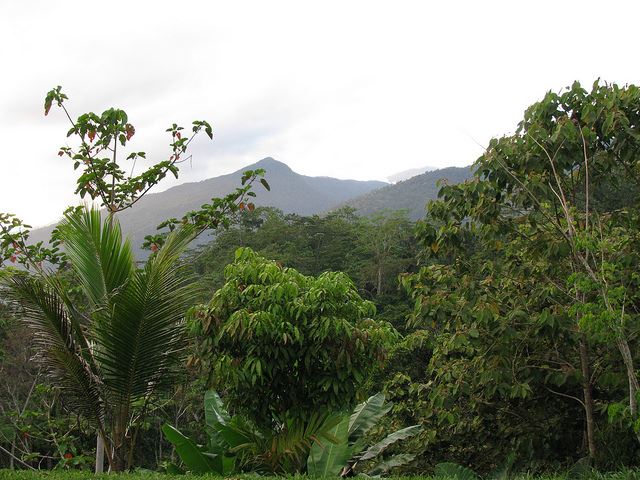
We have a lot of helpful practical information and tips about this walk, covering everything from the best books and maps, to timing and weather, geting there, possible problems, whether you need a guide and where to find them, and useful websites. This section is only open to members.
Membership is FREE AND JOINING TAKES 30 SECONDS. To login or sign up click here
Safety and problems: All walks have inherent risks and potential problems, and many of the walks featured on this website involve significant risks, dangers and problems. Problems of any sort can arise on any walk. This website does not purport to identify any (or all) actual or potential risks, dangers and problems that may relate to any particular walk.
Any person who is considering undertaking this walk should do careful research and make their own assessment of the risks, dangers and possible problems involved. They should also go to “Important information” for further important information.
Anyone planning an expedition to this place should see further important information about this walk.
Safety and problems: All walks have inherent risks and potential problems, and many of the walks featured on this website involve significant risks, dangers and problems. Problems of any sort can arise on any walk. This website does not purport to identify any (or all) actual or potential risks, dangers and problems that may relate to any particular walk.
Any person who is considering undertaking this walk should do careful research and make their own assessment of the risks, dangers and possible problems involved. They should also go to “Important information” for further important information.
COMMUNITY COMMENTS AND PHOTOS
Name: Jonty Crane
Posted on: 05/04/2020
Hi, These links might be useful to include... https://en.wikivoyage.org/wiki/Kokoda_Track https://jontynz.com/2019/08/21/things-learnt-on-the-kokoda-track/ Jonty
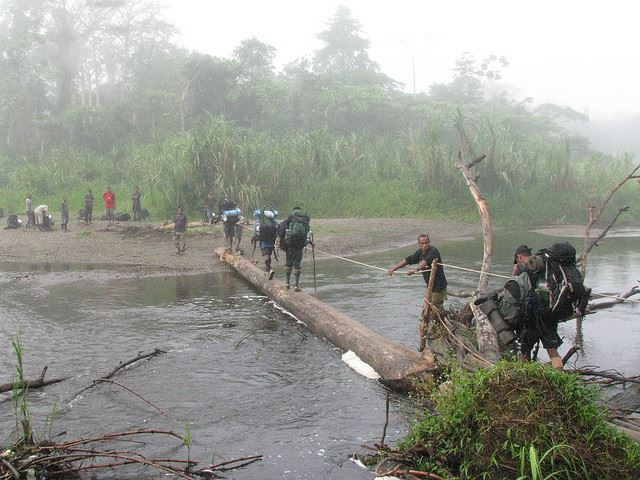
OTHER ACCOUNTS
share your experiences
Add your experiences, suggestions and photos. We would be delighted to receive your writing and ideas (which will be attributed appropriately where published).
Anyone planning an expedition to this place should see further important information about this walk.
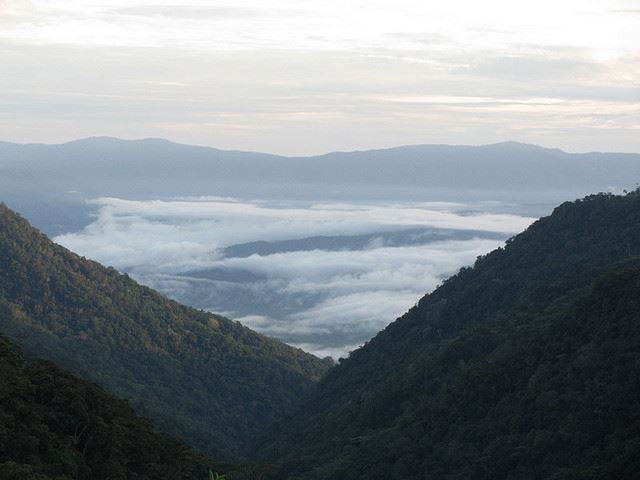
Responsible travel matters, a lot. How you travel will make a real difference - for better or worse. PLEASE consider this when making plans. Read more



